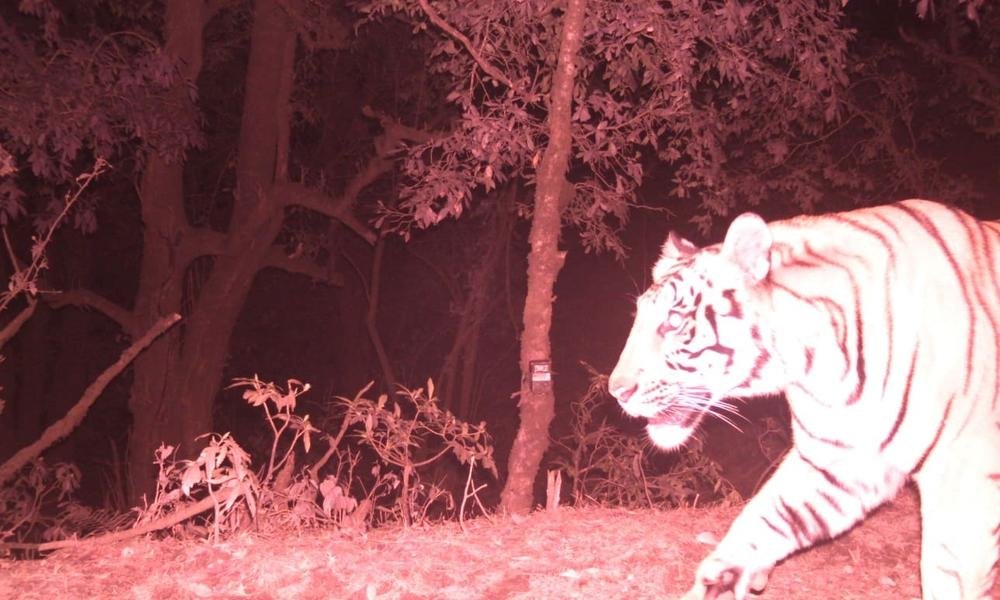By Emily Goodheart | Employee Engagement Intern
Tiger spotted at record-high elevation in Nepal
New camera trap images reveal the highest-elevation sighting of a tiger in Nepal, captured at over 8,000 feet in a densely forested area. The images were taken by one of the 32 pairs of cameras set up in the Dadeldhura district in western Nepal as part of a month-long survey conducted by the Divisional Forestry Office and WWF Nepal. The survey built upon results from a 2017 survey conducted by the Terai Arc Landscape Program, which confirmed the presence of an individual tiger in lower elevations—1,598 feet—in Dadeldhura.
Why is this significant?
This first-ever recorded evidence of a tiger at this high of an elevation in Nepal supports the notion that high-altitude habitats may provide refuge for tigers and help connect their territory between Nepal and India. The finding also expands Nepal’s known tiger distribution from the Terai Arc Landscape, widening opportunities for potential tiger habitats including the use of high-altitude areas.
“We know that tigers are highly adaptable and have been documented at various altitudes in different landscapes, but in this case, it is important to find out why,” said Nilanga Jayasinghe, senior program officer for Asian Species Conservation. “These images are especially significant because they point to the importance of natural corridors that provide safe dispersal pathways between protected areas for tigers and other wildlife.”
The Government of Nepal’s flagship Terai Arc Landscape Program has already restored many such connectivity bottlenecks to make the landscape functional, recognizing that the main threat to wild tigers in the Terai Arc is habitat loss and fragmentation. Still, more needs to be done to ensure those landscapes stay connected in the future.
Maintaining and restoring key wildlife corridors is essential to expanding tiger populations, but increasing threats from infrastructure development is fragmenting these key habitats. WWF is working with policymakers, companies, and investors to improve sustainable approaches to infrastructure planning and construction to ensure consideration is given to important wildlife passages and crossing points into protected landscapes. Sustainable infrastructure is not only beneficial to tigers and other wildlife, but also important to socio-economic growth, particularly to the rural areas and local communities, and for maintaining functional habitats, ecosystem services, and climate resilience.
What you can do to help
Your continued support means the world to tiger survival. Please share our project with your colleagues, friends, and family.
Links:
Project reports on GlobalGiving are posted directly to globalgiving.org by Project Leaders as they are completed, generally every 3-4 months. To protect the integrity of these documents, GlobalGiving does not alter them; therefore you may find some language or formatting issues.
If you donate to this project or have donated to this project, you can recieve an email when this project posts a report. You can also subscribe for reports without donating.
Support this important cause by creating a personalized fundraising page.
Start a Fundraiser